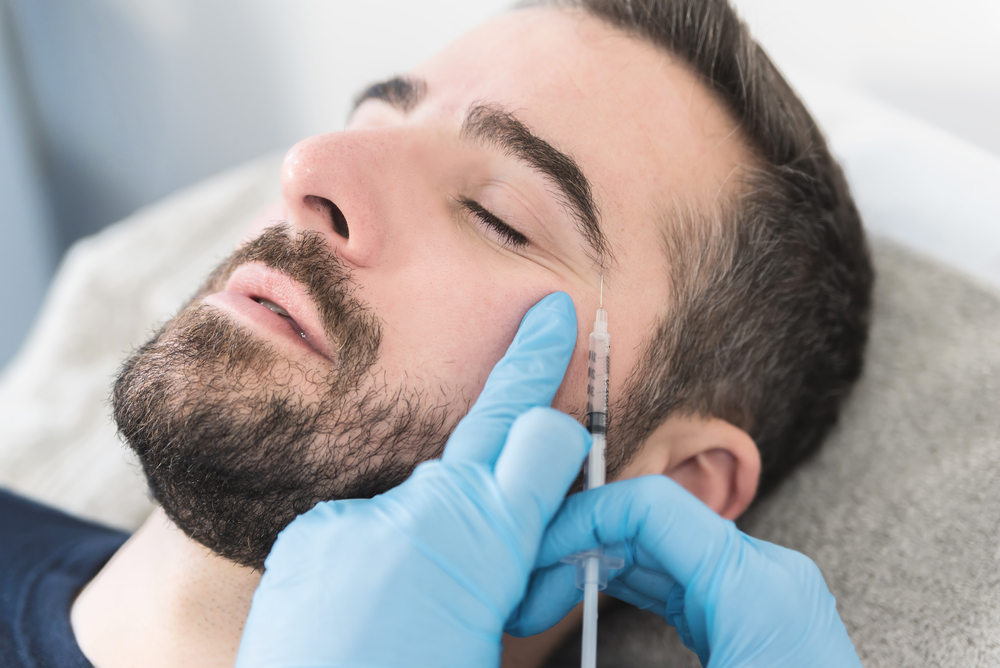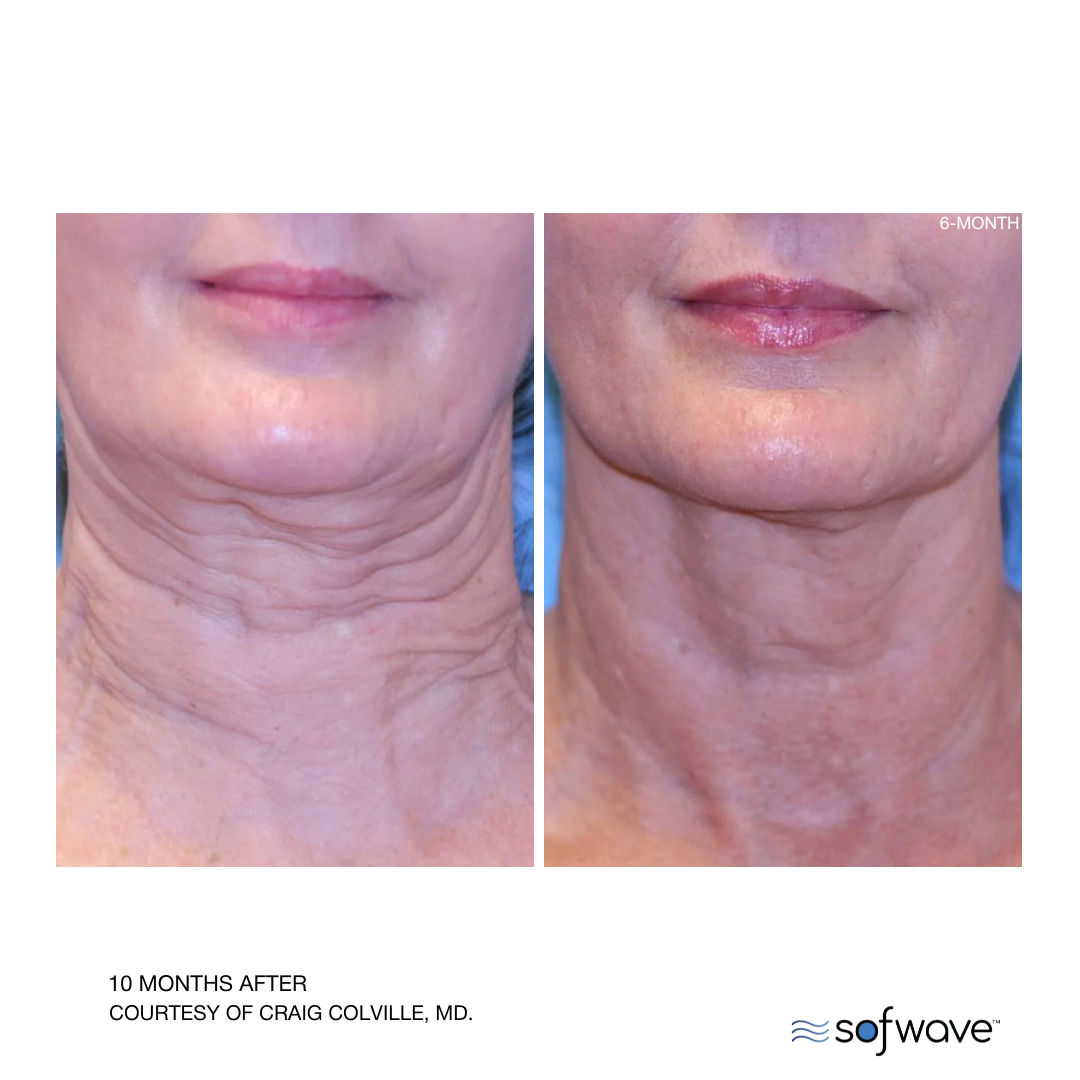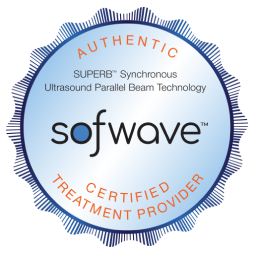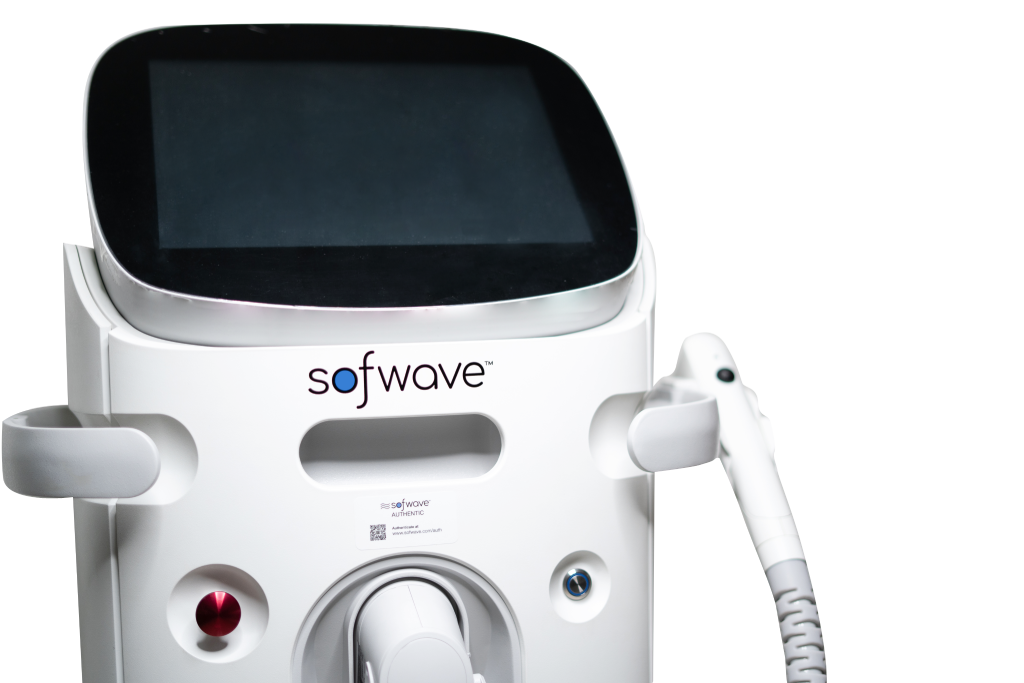
As we get older, it’s only natural that we wish we could wave a magic wand to reverse the ravages of time on our faces – those wrinkles that keep multiplying, those laugh lines that keep getting deeper and deeper, and that sagging under the eyes that make us look so tired. We have to admit it — this is not how we want to see ourselves. However, in searching for the eternal fountain of youth, it’s difficult to know which beauty-enhancing procedure to choose. It’s a perplexing dilemma that we find ourselves in.
Dermal fillers have traditionally been one of the secrets to reclaiming a more youthful look, but now, Sofwave™ ultrasound treatments are getting a lot of industry buzz. So, how do dermal fillers and Sofwave technology compare – and which of these procedures would be best?

The skinny on dermal fillers
Dermal fillers consist of gel-like substances – such as hyaluronic acid, calcium hydroxylapatite, poly-L-lactic acid, and polymethyl-methacrylate microspheres (PMMA) – that a physician injects beneath your facial skin to improve an area of concern. Physicians have a variety of dermal fillers to work with. They might choose a thicker filler for deeper issues, such as to provide support and structure for cheekbones. For more shallow issues, like fine lines and wrinkles, a thinner dermal filler can help smooth out the skin.
If you put yourself in the right medical hands, injectable dermal fillers can plump up thin lips, enhance shallow contours of the face, soften facial creases, and decrease fine lines and wrinkles. Your skincare specialist can determine the best type and volume of filler needed for those facial problem areas that you’ve been fretting over.
Is there a negative side to dermal fillers?
As with any minimally invasive procedure, there can be some side effects from dermal fillers (especially in cases of their misuse) that can lead to lumps, bumps, or asymmetrical results, as well as serious injuries or disfigurement.

Since these injectable fillers are a relatively safe way to refresh facial appearances, some people get carried away with using these products to fill in every perceived facial imperfection. Over time, these patients can end up with an over-filled and odd-looking facial appearance. Have you ever seen people whose faces are so plumped up that they look like an over-stuffed pillow? And when upper lips and nasolabial folds are overfilled, people can appear like they have a lion’s mask on – not a great look.
Dr. Dev Patel, founder and medical director of Perfect Skin Solutions in the UK, says that when dermal fillers are administered irresponsibly, they can ruin your natural beauty.
“Some areas of the face can have too much puffiness,” says Dr. Patel, “and this means that facial features can become asymmetrical or too blended – causing appearances to morph into an undesirable look.”

And, unless you have a large stash of cash lying around, dermal fillers can be quite expensive, with each syringe costing around $1,000. It can take many syringes and repeated treatments to smooth out our aging contours. It’s easy to see how depending on dermal fillers to maintain our youth can take quite a hit on our budgets!
Dr. Patel warns against choosing cheaper alternatives to physician-administered dermal fillers because black-market fillers can contain a variety of nonsterile substances, such as hair gel, that can cause serious health risks.
The Less is More Approach
In moving away from this trend of relying on dermal fillers, Dr. Patel says that people now seem to prefer a “less is more” approach to cosmetic procedures. Even celebrities are going for a more natural look when making improvements to their facial skin. That’s why Sofwave ultrasound technology is taking the lead over dermal fillers in the beauty industry. Unlike dermal fillers, Sofwave procedures signal the body to increase its production of collagen so that you end up with a very natural-looking result.
“You will only look unnatural because of human error,” Dr. Patel says. “But the body won’t make those errors. And that’s what is really magical about Sofwave.”

How does Sofwave compare with dermal fillers?
Instead of filling our faces with dermal fillers as we age, Sofwave’s proprietary Synchronous Ultrasound Parallel Beam SUPERB™ technology makes it possible to lift our facial skin and reduce wrinkles– without needles and without the risks that come with minimally invasive procedures.
Dr. Munir Somji, founder and chief medical officer of Dr MediSpa clinics in the UK, says that Sofwave treatments have reduced his patients’ dependence on some injectables.
“Where you are losing volume, there will always be a place for dermal fillers,” he says. “But what I’ve noticed, when I look at ‘before + after’ photos of Sofwave, is that you’ve got this little bit of a plumping effect, and that is all secondary to the fact that the skin becomes thicker – so the health of your skin gets better. Sofwave is designed to safely encourage the body to increase its production of the skin’s collagen so that in the end, the patient’s face and neck look naturally refreshed and improved,” says Dr. Somji.

How does Sofwave™ work?
Here’s the short version of an incredibly intelligent and innovative technology: Sofwave™’s ultrasound energy passes through the skin’s surface, heating the mid-dermal tissue at just the precise depth and temperature to rejuvenate collagen fibers, which in turn lifts the skin. During the treatment, the system’s Sofcool™ cooling mechanism protects your skin from burning – which is important for ensuring safety.
Unlike dermal fillers, which can require multiple and repeated injections, Sofwave™ patients can often achieve their desired results with just one Sofwave™ treatment. And Sofwave™ is appropriate for all skin types, which means that you don’t have to worry about a negative outcome – Sofwave ultrasound procedures are just prompting your own body to do its thing to produce more collagen.

Sofwave has also been cleared by the U.S. Food and Drug Administration (FDA) for reducing facial lines and wrinkles, lifting the eyebrow, and lifting lax skin of the submental and neck tissues – so you know this technology has been checked out.
What are Sofwave treatments like?
As cosmetic procedures go, the discomfort level with Sofwave treatments is minimal. Before the procedure, a topical anesthetic cream is applied to your face and neck so that you stay fairly comfortable while the ultrasound energy is delivered. As the treatment progresses, you will feel a warmness of the skin. Afterward, there is no pain or discomfort, and you can go right back to your activities.
Sofwave takes about 30 to 45 minutes, making treatment quick and convenient. You can run over to your Sofwave appointment on your lunch hour and get back at work quickly – feeling fine and your skin looking fully refreshed.

How much does a Sofwave treatment cost?
Sofwave procedures can vary by clinic and by region, but they average $1,500 per treatment area. Most physicians recommend a yearly Sofwave treatment for maintenance as your skin continues to age. Compared with the cost of using multiple dermal fillers to cover all your facial nooks and crannies, the cost of a single Sofwave treatment is a deal.
What recognition has Sofwave received?
Since Sofwave technology made its debut in 2020, it has been recognized with numerous awards. This year, Cosmopolitan magazine’s Holy Grail Beauty Awards honored Sofwave with an award for “Best Game Changer” in its Winning Product category. NewBeauty magazine also recognized Sofwave as the award winner for “Best Latest in Ultrasound” in its April 2022 Beauty Awards. SHAPE magazine released its 2022 Skin Awards, naming Sofwave a “winner to help achieve your healthiest complexion.” Additionally, ELLE magazine’s “2021 Future of Beauty Awards” named Sofwave as one of the best in its In-Office Skin Treatment category.
Dr. Sophie Shotter, founder and medical director of Illuminate Skin Clinics in the UK, joins physicians worldwide, giving Sofwave positive reviews.

“It’s such a lovely thing when you see people coming back several months after a treatment, and they’re delighted,” Dr. Shotter says. “They may have had their Sofwave treatment months before, but they can still feel the difference in their skin, and they can see it. The places that they typically notice it most are around the eyes and the neck. Our ‘before + after’ photos are outstanding – and when we have that to show our patients, it’s just brilliant. The satisfaction with Sofwave is so high.”
What does she think about dermal fillers in comparison with Sofwave?
“There are people who are not suited for these injectables – for instance, some people are afraid of needles, and some are afraid that they’re going to look different,” explains Dr. Shotter.
“With Sofwave, you’re not going to have those concerns, so you can’t go wrong. You’re going to look like you – only fresher, brighter, and more rested. This is what makes Sofwave such a great choice.”
References:
- “Dermal Fillers – What to Know,” Evan Starkman, WebMD, https://www.webmd.com/beauty/dermal-fillers-what-to-know
- “Dermal Fillers,” American Society of Plastic Surgeons, https://www.plasticsurgery.org/cosmetic-procedures/dermal-fillers
- “Dermal Fillers,” American Society of Plastic Surgeons, https://www.plasticsurgery.org/cosmetic-procedures/dermal-fillers
- http://“Dermal Fillers (Soft Tissue Fillers),” U.S. Food and Drug Administration (FDA), https://www.fda.gov/medical-devices/aesthetic-cosmetic-devices/dermal-fillers-soft-tissue-fillers
- http://“Dermal Fillers: The Good, the Bad and the Dangerous,” Kristina Liu, MD, MHS, Harvard Health Publishing, Harvard Medical School, https://www.health.harvard.edu/blog/dermal-fillers-the-good-the-bad-and-the-dangerous-201907152561
- “Dermal Fillers,” Cleveland Clinic, https://my.clevelandclinic.org/health/treatments/22667-dermal-fillers





